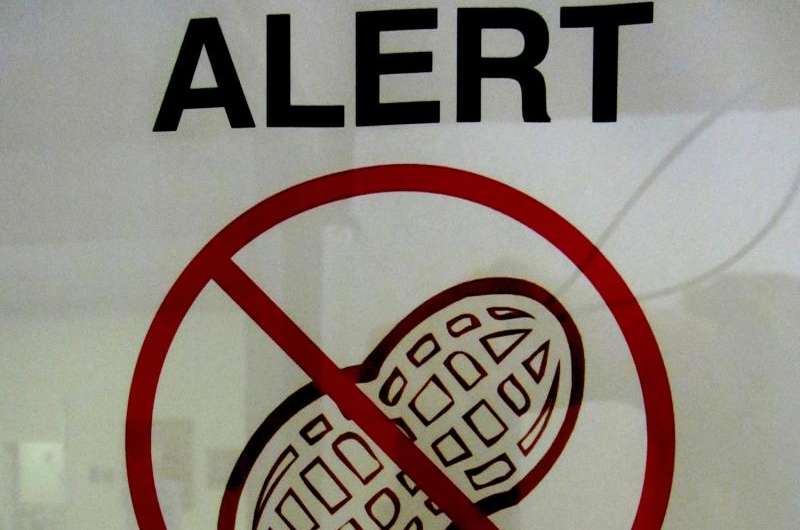Peanut-allergic children are more at risk of exposure at home than at school

Children who are allergic to peanuts are far more likely to be exposed to them in their own homes that at school, says University of Montreal's Sabrine Cherkaoui. Cherkaoui and her colleagues at McGill University came to the discovery after reviewing the circumstances surrounding 567 incidents of accidental peanut exposure to allergic children.
"Our study looked at 1,941 children who had been diagnosed as being allergic to peanuts to determine how exposure occurs, how serious the outcomes of the exposure are, and what treatment is given," explained Cherkaoui, who was first author of the study. "We discovered that children are most at risk of exposure in their own homes. Furthermore, when children do have a moderate or severe reaction to an exposure, parents and medical professionals often do not know how to react appropriately." The research was directed by her research supervisor, McGill's Dr. Ann Clarke.
The children were recruited from allergy clinics and allergy advocacy organizations. All the children in the study had suffered allergic reactions to peanuts in the past. The mean age of the children at the time of their recruitment into the study was 6.9 years, and the mean length of their participation was 2.9 years. During this time, 567 exposures would occur to 429 of them. The researchers classified 11.3% of the reactions to these exposures as "severe" and 50.1% as "moderate." "Only 42% of severe peanut allergy reactions recorded in this study were evaluated by a medical professional, and almost one in six went totally untreated. For moderate reactions, the situation is far worse - medical attention was sought only 25% of the time," Cherkaoui said. "This is despite 37% of exposures occurring in the child's own home. Other people's homes and restaurants accounted for 14.3% and 9.3% of exposures respectively. Schools and daycares where peanuts are forbidden represented 4.9% of the cases exposure; for schools and daycares where peanuts are allowed, it's 3%." Other and unknown places accounted for 31.6% of exposures.
The researchers did find that accidental exposures were less and less likely as the study went on, and they believe this is due to children and parents developing better avoidance strategies. However, adolescents were at a high-risk, something the team imputes to teenagers' general predilection towards risk-taking behaviour. They also put forward two possible explanations for the lack of difference between peanut and peanut-free schools and daycares. "Firstly, schools and daycares that allow peanuts may be doing a good job of controlling risk due to heightened awareness of the dangers. Secondly, when peanuts are not allowed, the child may be lulled into a false sense of security, as peanut-foods may inadvertently be brought in and shared with the child," Cherkaoui explained. "The most significant finding of this study is the discovery that most moderate and severe accidental exposures are managed inappropriately by caregivers and physicians. We believe that more education is required on the importance of strict allergen avoidance and the need for prompt and correct management of anaphylaxis."
More information: Sabrine Cherkaoui, Moshe Ben-Shoshan, Reza Alizadehfar, Yuka Asai, Edmond Chan, Stephen Cheuk, Greg Shand, Yvan St-Pierre, Laurie Harada, Mary Allen and Ann Clarke published "Accidental exposures to peanut in a large cohort of Canadian children with peanut allergy" in Clinical and Translational Allergy on April 2, 2015.


















